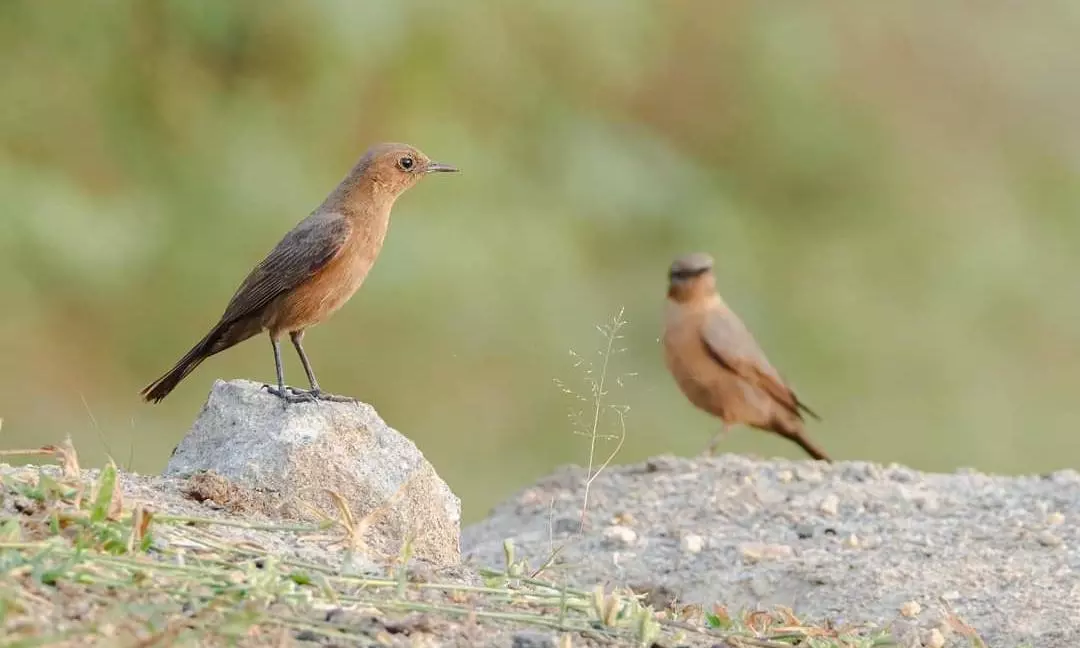Eternal Rocks Lose Out to Urbanisation in Hyderabad

Hyderabad: Rocks that are as old as Himalayas or more and have been witness to the transformation of this land — that is called Hyderabad now — over millions of years are getting destroyed for urban development, raising environmental concerns and altering the landscape.
Areas such as Kokapet near Allu Studios and the Rajendra Nagar ORR Exit are seeing significant rock destruction to make space for new buildings. Other sites include Peerancheruvu, Ghar-e-Mubarak, and Road No. 12 in Banjara Hills, particularly near the Skyla Service Apartments and many more rocks are getting disturbed everywhere in the city.
Rock boulders and formations are vital in providing habitat for various snake species, including the Indian rock python and Rock agama. The crevices and surfaces of these rocks offer shelter and warmth, making them crucial for these reptiles.
However, ongoing disturbances from urban development and quarrying are displacing these animals, which can lead to their decline. When snakes and other wildlife are forced to leave their homes, they often struggle to find new habitats and food sources, increasing their risk of death, as well as moving into human habitats.
Additionally, birds that rely on rocky environments for shelter are also becoming harder to spot as these areas are disrupted.
The loss of these unique habitats threatens the delicate balance of local ecosystems. Birds like the Indian Eagle Owl, Rock Bush Quail, and Brown Rock rely on rocky habitats for nesting and roosting. The destruction of these terrains directly leads to a loss of their homes, forcing them to relocate, which may not always be successful due to limited suitable habitats elsewhere.
V. Ravi Kumar, director (retd.) at Hyderabad-based training institute of Geological Survey of India said the destruction of rocks not only removes their beauty but also disrupts the natural landscape. “We should avoid building colonies in areas with beautiful balancing rocks. When destroyed, rocks often turned into granite slabs for export, leading to further loss of natural features.”
He added that the way water flows in rivers such as the Musi is closely tied to the shape of the land. "Altering the land can alter drainage patterns, potentially causing flooding in nearby areas. For example, removing a hill that blocks water flow can redirect water to places where it shouldn’t go," he said.
Additionally, changes in the landscape affect wind patterns and sunlight, impacting local vegetation, he explained, adding that preserving the natural geomorphology is essential for maintaining a healthy ecosystem.
Vani Prasad, principal secretary of, youth advancement, tourism and culture (youth services) department, told Deccan Chronicle that while she 'cannot be an activist', she is doing her "best to ensure more rocks will be designated as Geo-heritage sites to protect them from such destruction in the future."
Until now, Pandavula Gutta, an ancient geological site that is older than the Himalayan mountains, is the only officially named Geo-heritage site in the state.
"At several other places, I know and have seen how locals have always fought to protect such rocks from destruction when the government or other big private conglomerates plan any construction there, unlike Hyderabad, where most times, locals themselves want to do away with these boulders," she lamented.
However, an HMDA official told the Deccan Chronicle that these constructions are not the brainchild of the government nor are they encouraged. "People themselves are wanting to destroy these rocks to make way for new spaces. Our job is limited to permits and approvals."

